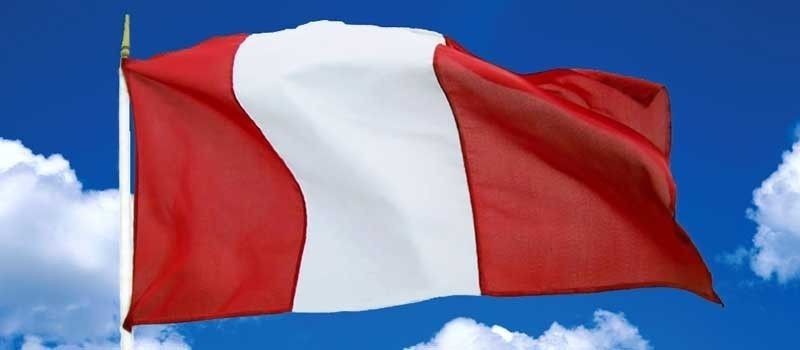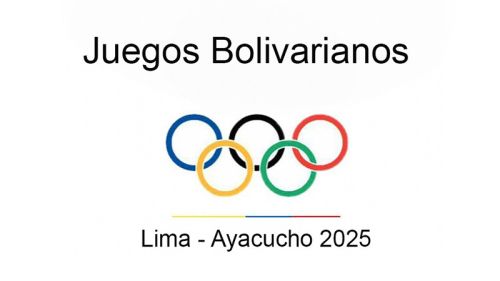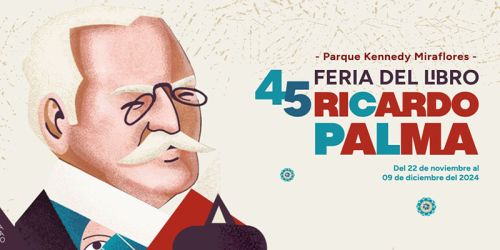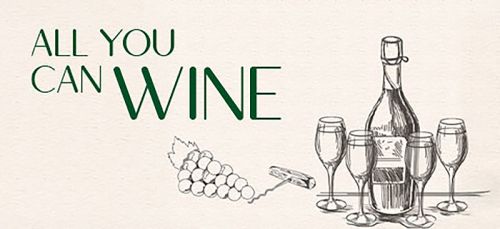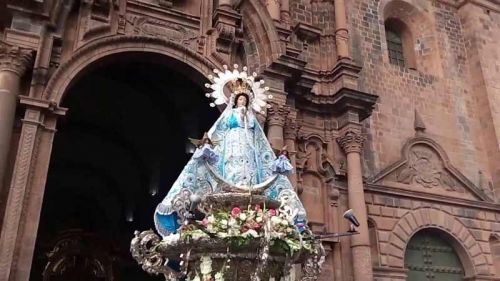The red and white colors of the Peruvian flag were an inspiration of General José de San Martín. There are various theories and interpretations about its composition.
Some historians claim that San Martín took the colors of Argentina (white) and Chile (red). Others acknowledge that the Peruvian flag was a product of the colors of the “Parihuanas”, birds native to the Bay of Paracas. This version is the most widespread in Peruvian schools and texts.
On the 21st of October 1820, General José de San Martín established by decree the first Peruvian flag. The crossing of two diagonal lines divided the flag into four fields. The upper and lower spaces were white, while the sides were red. Over the years, they implemented some modifications.
The centerpiece of the flag presents a shield framed by a laurel wreath that is tied together and the bottom with a golden ribbon. On the shield the sun rises (reference to the Sun God from Inca times) behind the mountain ranges (Andes) that stand tall before the sea (Pacific coast).
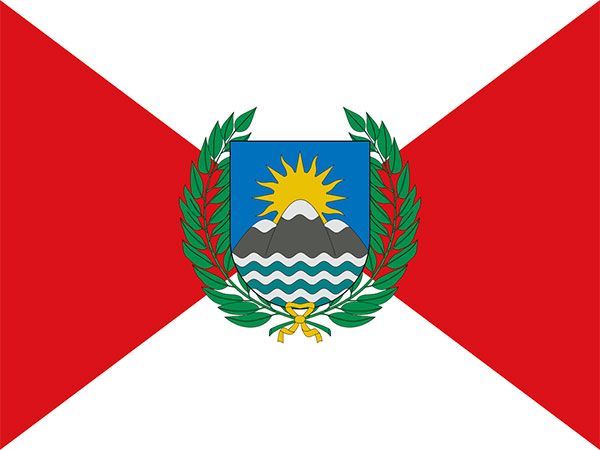
Interpretation of the Peruvian Flag
There are many theories about the meaning of the colors of the flag of Peru. The most common one by the historian Jorge Fernández Stoll says that the red originates from the Incas, because they used a crown that symbolized the blood of victory and power. The white stands for peace, justice, purity and freedom. This is only a view of the historian, and unfortunately there are no historical documents that explain the meaning of the colors.
The first Peruvian Flag under José Bernardo de Tagle
In 1822 they changed the design of the Peruvian Flag to two red horizontal strips (top and bottom) and a white strip in the middle that featured a sun in the center.
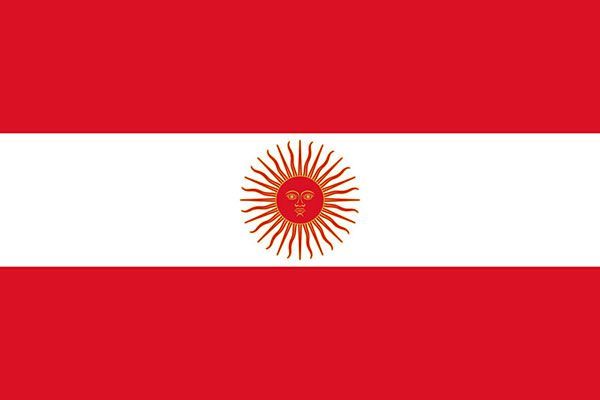
José Bernardo de Tagle y Portocarrero was a Peruvian soldier and politician who served as the Interim President of Peru in 1822 and the fifth President of Peru from 1823 to 1824.
The second Peruvian Flag under José Bernardo de Tagle
José Bernardo de Tagle approved a new design of the Peruvian Flag on the 31st of May 1822, as the previous one was easily confused with one the Spaniards. The new flag had three vertical stripes - red at the ends and white at the center - with a sun in the center.
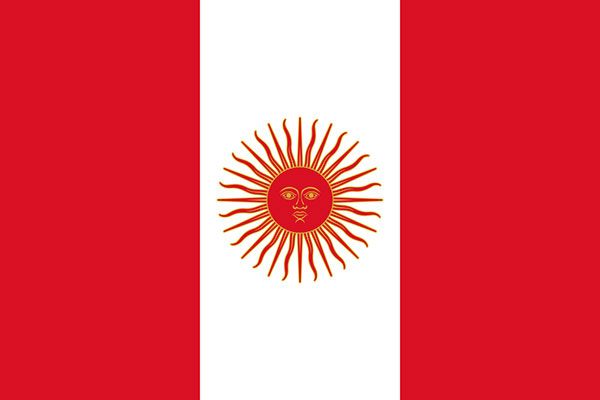
In reality, no new design features were added as only the direction of the stripes was changed from horizontal to vertical.
The flag of Peru in 1825
The flag created by José Bernardo de Tagle was ratified in 1825, leaving three vertical stripes, the extreme red and the center white, featuring the coat of arms in the middle of the white strip.
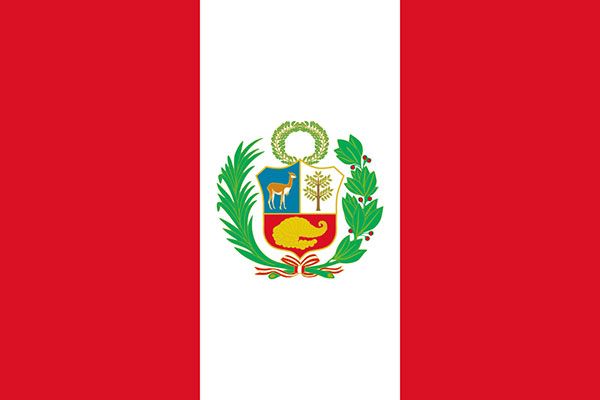
The Coat of Arms in the Peruvian Flag from 1825 contains of the national shield (the Escudo Nacional) with a vicuña (Peru's national animal) in the upper left, a chinchona tree (native to the tropical Andes region and the source for the anti-malaria drug quinine) on the upper right and on the bottom a coin filled cornucopia. These symbols represent Peru's fauna, flora and mineral wealth. The shield is topped with a Holm Oak Civic Crown and surrounded by a palm branch on the left and a laurel branch on the right that are knotted together with a red and white ribbon.
The Peruvian National flag since 1950
In 1950 for the first time, the flag was called the “Peruvian National Flag”. General Manuel Odría, president of Peru, gave the flag a more minimalistic presentation by removing the coat of arms from the center of the white stripe.
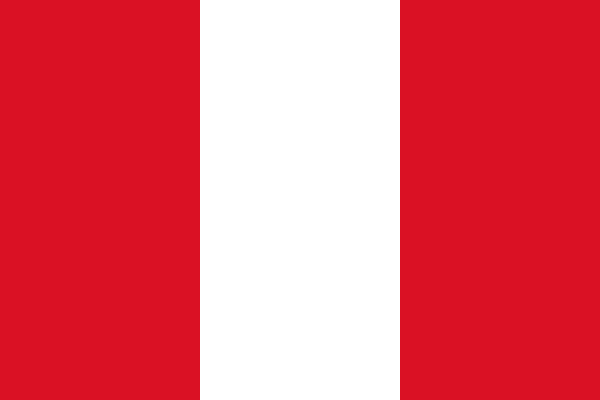
The previous version of the flag (from 1825) was adopted as the “State Flag” and “Naval Ensign” the same year (1950).
The Peruvian Flag is without any doubt the most important national symbol. To honor it, Peruvians celebrate the 7th of June each year the National Flag Day (Día de la Bandera) with a festive day.
Official colors scheme of the Peruvian National Flag
RGB: 217-16-35 (red) and 255-255-255 (white)
Hexadecimal: #D91023 (red) and #FFFFFF (white)
CMYK: 0, 93, 84, 15 (red) and 0, 0, 1, 0 (white)
Pantone: 485 C (red) and White
Peruvian State Flag since 1950
The state flag (pabellón nacional), used by state institutions, is marked with the coat of arms (Escudo de Armas). It is used during ceremonies in which they hoist the National Flag in the presence of spectators (as opposed to a static, permanent flag).
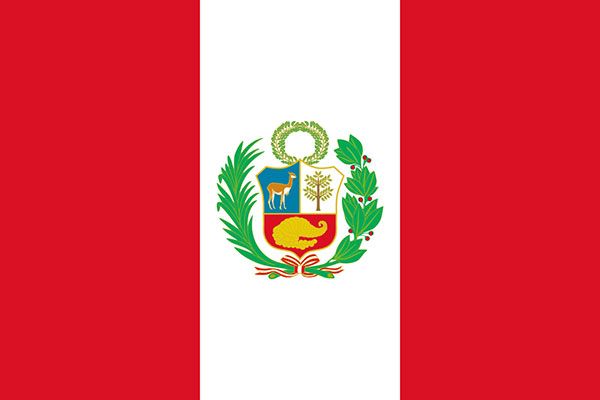
A form of this flag, the national standard (estandarte nacional) is used indoors by official and private institutions. They use it for the Government Palace, the United Nations, etc. It is also used by the Peru national football team.
The Peruvian State Flag is the same as the Peruvian Flag that was introduced in 1825 and also features the identical Coat of Arms with the national shield, the vicuña, a chinchona tree and a coin filled cornucopia. The shield is also topped with a Holm Oak Civic Crown surrounded by a palm branch on the left and a laurel branch on the right that are knotted together with a red and white ribbon.
Peruvian War flag since 1950
The war flag (bandera de guerra), similar to the state flag, is marked with the national shield (Escudo Nacional). It is flown by the Peruvian military and national police and is typically inscribed with the service name and the number of the unit flying it.
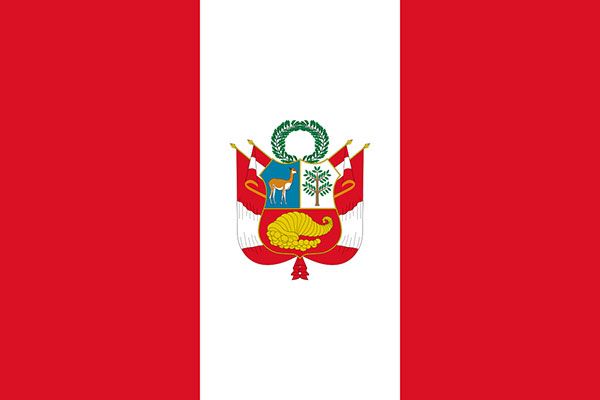
The Peruvian War Flag features a slightly different version of the Coat of Arms. As in the current Peruvian State Flag and the Peruvian Flag that was introduced in 1825, the Coat of Arms features the national shield, the vicuña, a chinchona tree and a coin filled cornucopia. The shield is also topped with a Holm Oak Civic Crown surrounded by a palm branch on the left and a laurel branch on the right that are knotted together with a red and white ribbon. Different to all other previous versions is an additional backing of four Peruvian Flags hanging from crossed flagpoles whereby the ends of the flags are tied together just behind the lower tip of the shield.
Peruvian Naval Jack
The naval jack (bandera de proa) is not based on the triband;It is a square flag, comprising a white square with the coat of arms (Escudo de Armas) on a red field. They use it on warships, usually with the ensign of the highest-ranking officer on board above it.
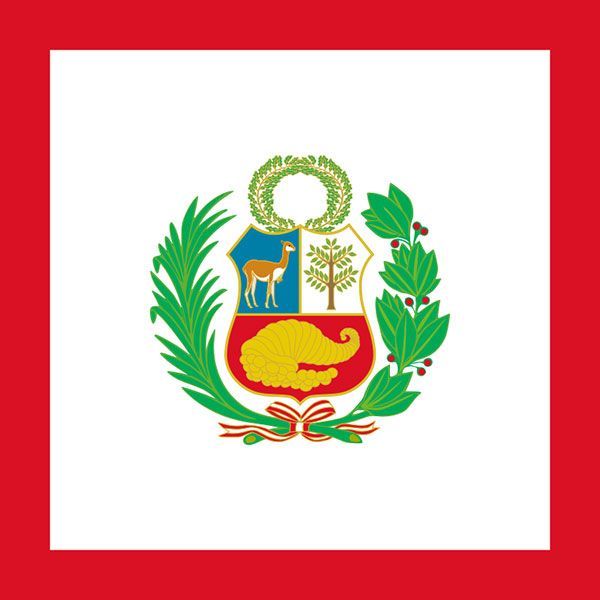
The centerpiece of the Peruvian Naval Jack is clearly the Coat of Arms. It is the same one as described for the current State Flag and the flag from 1825.


